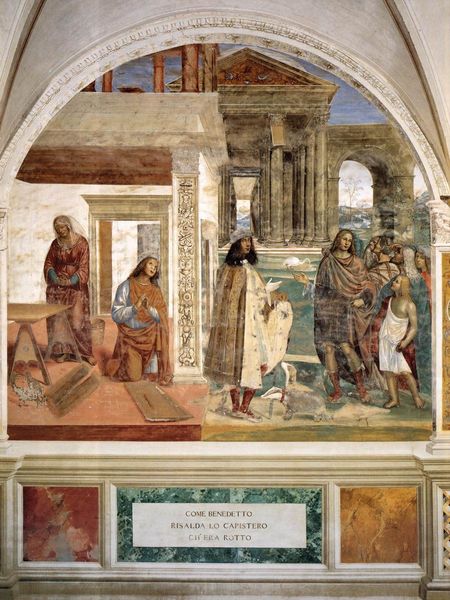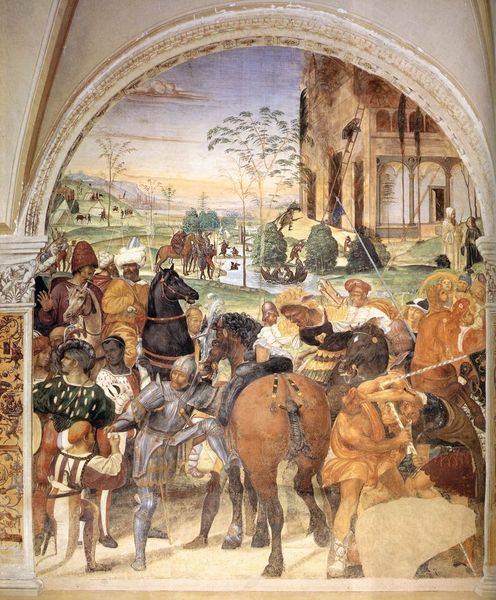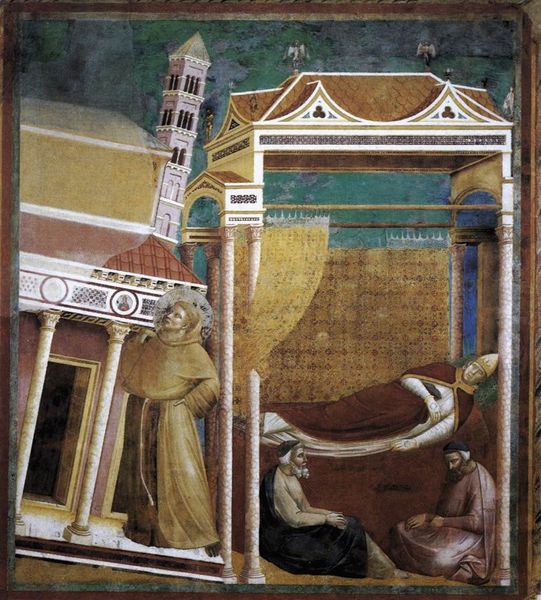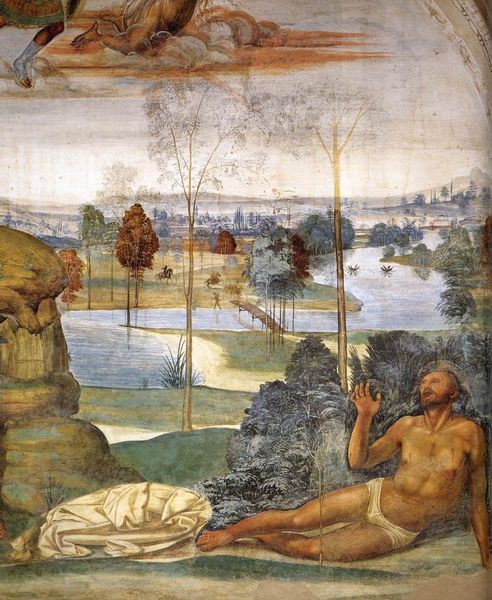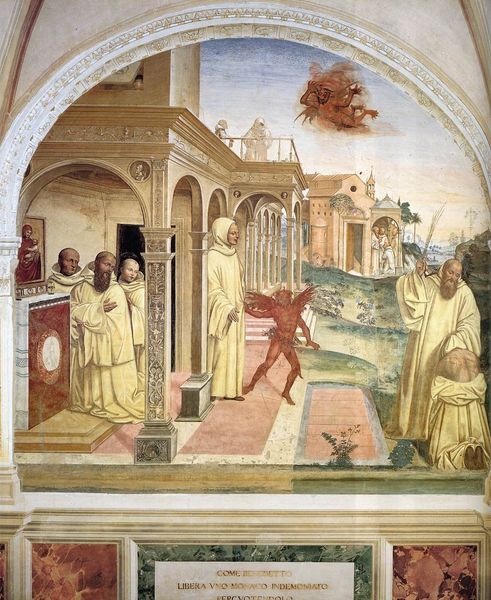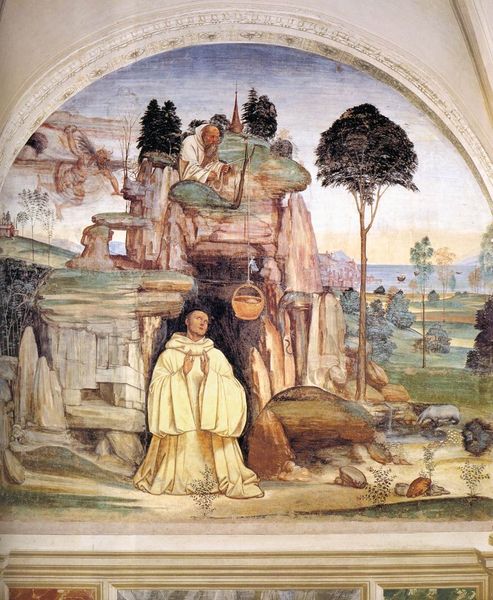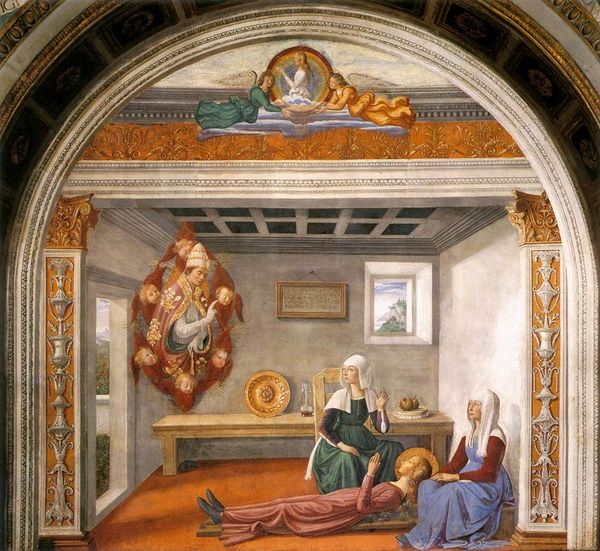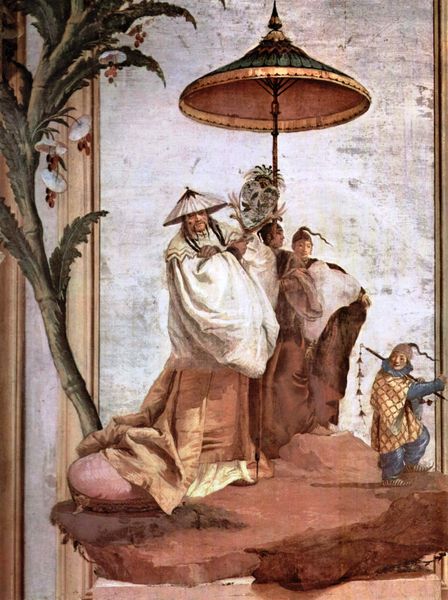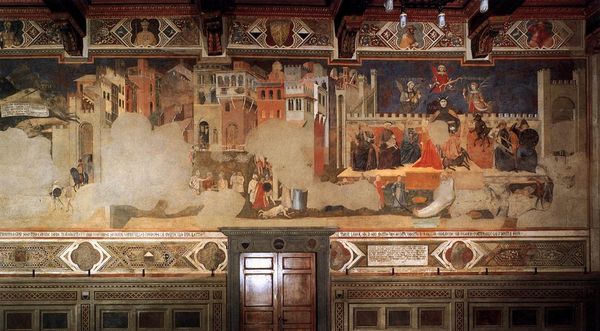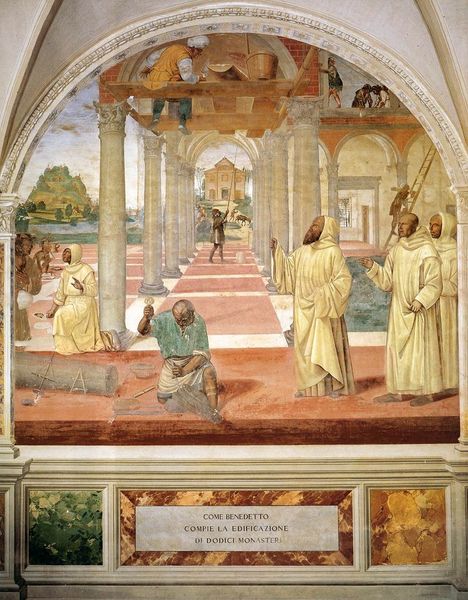
painting, fresco
#
painting
#
sculpture
#
landscape
#
holy-places
#
historic architecture
#
fresco
#
oil painting
#
history-painting
#
italian-renaissance
Copyright: Public domain
Curator: What immediately strikes me is the duality within this fresco; there’s an interior scene almost theatrically set off to the left and then a bustling outdoor landscape occupying the rest. The pale coloration really highlights this stark divide in narrative space. Editor: Indeed. This fresco by Il Sodoma, painted around 1508, depicts a scene from the life of St. Benedict—specifically, “Benedict Appears in the Dreams of Two Monks.” Notice how the composition is divided between the spiritual and the earthly realms? Curator: Precisely. The interior is so still, almost like a pre-Raphaelite tableau vivant, complete with a saintly figure constructing something delicate while two shrouded figures lie abed, presumably dreaming. The symbols of spiritual labor and subconscious communion are strong. Editor: And on the other side, look at the construction site. Workers are actively building, mixing mortar. This juxtaposition points to the dual nature of Benedict's influence – his direct impact on the earthly lives of his monks, and his presence in their spiritual world through divine guidance. The action contrasts powerfully with the passivity of the sleepers. Curator: It's fascinating how Il Sodoma uses the architecture itself—that very Renaissance arch—to physically separate these realms, and the cool, restrained palette inside contrasts against the comparatively warmer hues outside, emphasizing the stark juxtaposition. Editor: The fresco's color choices and arrangement carry deeper cultural weight. The cool tones of the bedroom represent the quiet contemplation of monastic life, while the earthy tones in the construction scene connect the monks to their physical labor and devotion to St. Benedict's practical teachings. Notice how the architectural details reflect both devotion and ambition in Renaissance ideals. Curator: The artist's technique, especially in how he renders light, is striking. It gives this division weight and a touch of mystery that is enhanced through these visual arrangements and contrasts in color. The spatial organization almost mimics a diptych. Editor: It’s remarkable to see how spatial composition, along with coloration and setting, not only tells a story but subtly suggests a path—the connection between inner spiritual experience and everyday human work—that reverberates even today. Curator: Absolutely, looking at it this way, this fresco then, seems less about dividing worlds and more about linking spiritual presence within mundane action. Editor: An ingenious articulation from Sodoma to depict and reinforce the foundations of both the earthly and the spiritual.
Comments
No comments
Be the first to comment and join the conversation on the ultimate creative platform.
